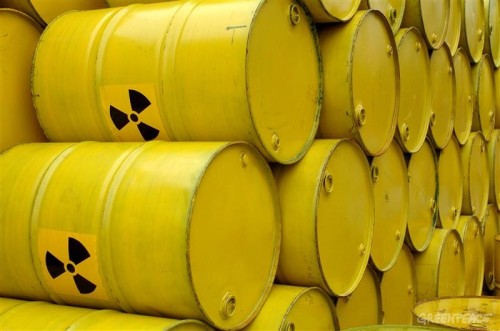Inter Press Service | Nov 6, 2012
by Alice Marcondes

The jaguar is one of the first three species that Brazilian scientists will attempt to clone. (Photo courtesy of the Brasilia Zoo.)
RIO DE JANEIRO – Brazilian scientists are attempting to clone animals in danger of extinction, like the jaguar and maned wolf, although the potential impact on the conservation of these threatened species is still not clear.
The cloning initiative is being undertaken by the Brasilia Zoological Garden in partnership with the Brazilian government’s agricultural research agency, EMBRAPA, and is now in its second phase. The research is aimed at adapting cloning techniques to wild animal species as a means of contributing to conservation.
The first phase involved the collection of samples of genetic material, or germplasm, in the form of blood, sperm, somatic cells and umbilical cord cells.
“We already have 420 germplasm samples stored in our bank and are going to continue collecting,” EMBRAPA researcher Carlos Frederico Martins told Tierramérica*.
Eight animals have been chosen for the initiative, including the maned wolf (Chrysocyon brachyurus), the jaguar (Panthera onca) and the black lion tamarin (Leontopithecus chrysopygus). Most are on the Red List of Threatened Species compiled by the Chico Mendes Institute for Biodiversity Conservation (ICMBio) and the International Union for Conservation of Nature (IUCN).
The samples were gathered over the course of two years. In addition to the three species mentioned above, the bank has also been stocked with germplasm from the bush dog (Speothos venaticus), coati (genus Nasua), collared anteater (Tamandua tetradactyla), gray brocket deer (Mazama gouazoubira) and bison (genus Bison).
The researchers harvested the genetic material primarily from dead specimens of animals native to the Cerrado, the vast tropical savannah biome that stretches across central Brazil.
The next phase will be the training of researchers at the zoo.
“At EMBRAPA we have already cloned cows. What we are going to do now is to transfer our knowledge to the researchers so that they can conduct studies to adapt the technique to wild animals,” said Martins.
EMBRAPA was responsible for the birth of the first cloned animal in Brazil, a calf named Vitória, who was born in 2001 and lived until 2011.
After Vitória, many other animals have been cloned, mainly cows and horses who now add up to over 100 living specimens.
A bill that has been making its way through the Brazilian senate since 2007 would establish regulations for the practice of cloning, since the current legislation does not set very clear rules.
“Research can be freely conducted, but there is little monitoring and control. Any laboratory can clone cows, so it is impossible to precisely say how many clones exist,” explained the EMBRAPA researcher.
This is Brazil’s first attempt at cloning wild animals. Martins noted that “countries like the United States and South Korea are already working on similar research.”
The lack of prior experience makes it difficult to foresee how long it will take to produce the first clone, he said. But “we can predict that it will probably be a maned wolf, since this is the species for which we have many samples of genetic material,” he added.
Martins stressed, however, that the goal is not to release the clones into the wild. “The zoo wants to increase the number of specimens for its own use. The idea is to keep these animals in captivity. The use of clones would prevent the impact caused by the removal of these animals from their natural setting,” he said.
“From the point of view of conservation, the ideal approach is to preserve and multiply the number of wild animals where they are found,” he emphasised. Since cloned specimens contain the exact same genes as the animals they were cloned from, “they do not have the genetic variability that would make it beneficial to release them in the wild,” he explained.
Cloned animals would only be released in extreme cases, Martins said.
“If a certain species was in a state of drastic decline, at risk of total extinction, and it was possible to provide reinforcement, we will have the capacity,” Juciara Pelles, the head of conservation and research at the Brasilia Zoo, told Tierramérica.
“We are still in the phase of developing the technology, so we still don’t know if it will be possible to rescue a population in the wild, but we could potentially make it viable again,” she added.
The current technique has a five to seven percent rate of effectiveness. According to Martins, this percentage is within the average range achieved worldwide.
“It’s a low number, which makes the technology more costly, but it is average. The research underway is also aimed at raising it,” he noted.
For Onildo João Marini Filho, a biologist at ICMBio, the cloning of horses and cows is justified by its commercial purposes. But the cloning of wild animals needs to be handled with caution.
“There has to be a very tangible benefit for conservation. If there is something to be gained, it is valid. It might be possible, for example, to increase the number of animals to help with a breeding programme,” he told Tierramérica.
In order for the second phase of the research to effectively begin, the Brasilia Zoo is waiting for legal authorisation from the relevant agencies. It is hoped that the initial steps towards the creation of the first clone can be taken in approximately one month. “This is a long-term project,” said Pelles.
* This story was originally published by Latin American newspapers that are part of the Tierramérica network. Tierramérica is a specialised news service produced by IPS with the backing of the United Nations Development Programme, United Nations Environment Programme and the World Bank.








